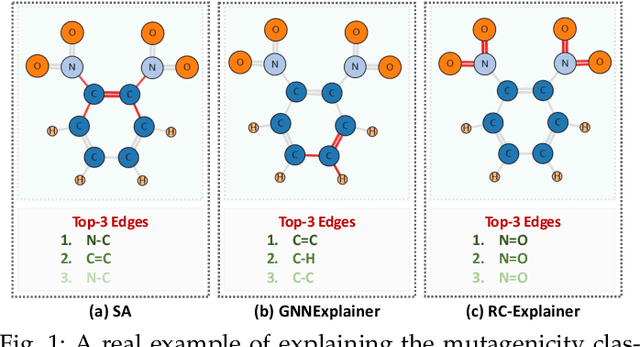Reinforced Causal Explainer for Graph Neural Networks
Paper and Code
Apr 27, 2022



Explainability is crucial for probing graph neural networks (GNNs), answering questions like "Why the GNN model makes a certain prediction?". Feature attribution is a prevalent technique of highlighting the explanatory subgraph in the input graph, which plausibly leads the GNN model to make its prediction. Various attribution methods exploit gradient-like or attention scores as the attributions of edges, then select the salient edges with top attribution scores as the explanation. However, most of these works make an untenable assumption - the selected edges are linearly independent - thus leaving the dependencies among edges largely unexplored, especially their coalition effect. We demonstrate unambiguous drawbacks of this assumption - making the explanatory subgraph unfaithful and verbose. To address this challenge, we propose a reinforcement learning agent, Reinforced Causal Explainer (RC-Explainer). It frames the explanation task as a sequential decision process - an explanatory subgraph is successively constructed by adding a salient edge to connect the previously selected subgraph. Technically, its policy network predicts the action of edge addition, and gets a reward that quantifies the action's causal effect on the prediction. Such reward accounts for the dependency of the newly-added edge and the previously-added edges, thus reflecting whether they collaborate together and form a coalition to pursue better explanations. As such, RC-Explainer is able to generate faithful and concise explanations, and has a better generalization power to unseen graphs. When explaining different GNNs on three graph classification datasets, RC-Explainer achieves better or comparable performance to SOTA approaches w.r.t. predictive accuracy and contrastivity, and safely passes sanity checks and visual inspections. Codes are available at https://github.com/xiangwang1223/reinforced_causal_explainer.
 Add to Chrome
Add to Chrome Add to Firefox
Add to Firefox Add to Edge
Add to Edge